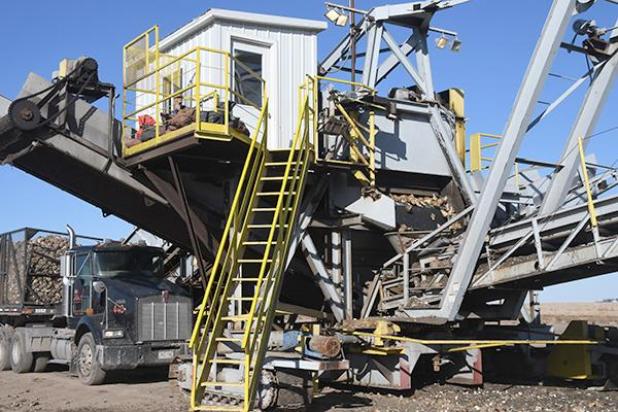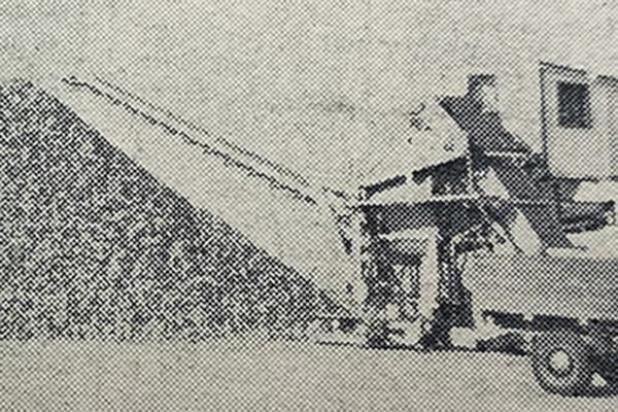
The beet piler at the sugar beet dump north of town stays busy as trucks bring in their crops Wednesday, Oct. 20. — The Holyoke Enterprise | Johnson Publications

This picture of the beet dump on Oct. 17, 1964, was run in the Oct. 22 edition of the Enterprise that same year. The original cutline said the beets were shipped by rail from the dump to the Great Western sugar factory in Sterling. — The Holyoke Enterprise File Photo
Holyoke home sweet home for sugar beets
Sugar beets produce more than 4.5 million tons of sugar each year in the U.S., which represents more than 54% of U.S. domestic sugar production.
They are root crops that do best in temperate climates with a growing season that is about five months long. Typically planted in late March or early April, they are about a foot long and weigh two-five pounds when harvested in September and October.
Sugar beets are a staple crop in the Holyoke area now, but it hasn’t always been that way.
According to the website of the Sugar Association, German chemist Andreas Marggraf discovered in 1747 that sugar beet roots contain sucrose, table sugar.
Marggraf’s apprentice, Franz Karl Achard, began selectively breeding sugar beets in 1784 and opened the world’s first sugar beet factory in what is now Poland in 1801. Sugar content in these first factory beets was about 6%, compared to the 15%-20% content of modern beets.
Sugar beets came to New England in 1836 but failed to take root. There were also unsuccessful attempts to cultivate them in Utah in the mid-19th century.
By 1850, the sugar beet industry was established in Europe since the English blockade during the Napoleonic Wars cut off the cane sugar supply.
The first successful commercial sugar beet factory in the U.S. was built in the 1870s in Alvarado, California. By 1914, the U.S. rivaled Europe in production. By 1917, there were more than 90 factories operating in 18 states.
As of 2017, there were 20 operating factories in nine states processing 35 million tons of sugar beets grown on more than 1 million acres.
After they’re harvested, sugar beets are refined and processed. They are washed, sliced and soaked in order to extract juice and separate it from the plant material. Beets are sliced to expose the cells, allowing sugar to be diffused out of those cells.
The resulting juice is taken through the purification process, which eliminates impurities from the sugar syrup, which is also called thin juice. Thin juice is called thick juice when the water is boiled off. The pulp that is left over is often used as cattle feed.
“We use about everything in the beet,” said Stewart Norrish, agriculturist with Western Sugar Cooperative. He added that making sugar is harder than it looks.
The next step is to crystallize sugar from the sugar syrup and then spin the crystals in a centrifuge to remove liquid. Molasses is a coproduct of this process.
Finally, the sugar crystals are dried and packaged for distribution.
Beginning of sugar beet industry in Holyoke area
The Sept. 5, 1963, edition of The Holyoke Enterprise reported that a beet meeting was held in Holyoke on Sept. 3 of that year.
Following the meeting, it was announced that at least 600 acres of beets would be raised in the Holyoke and Lamar, Nebraska, area in 1964.
The full article is available in our e-Edition. Click here to subscribe.
